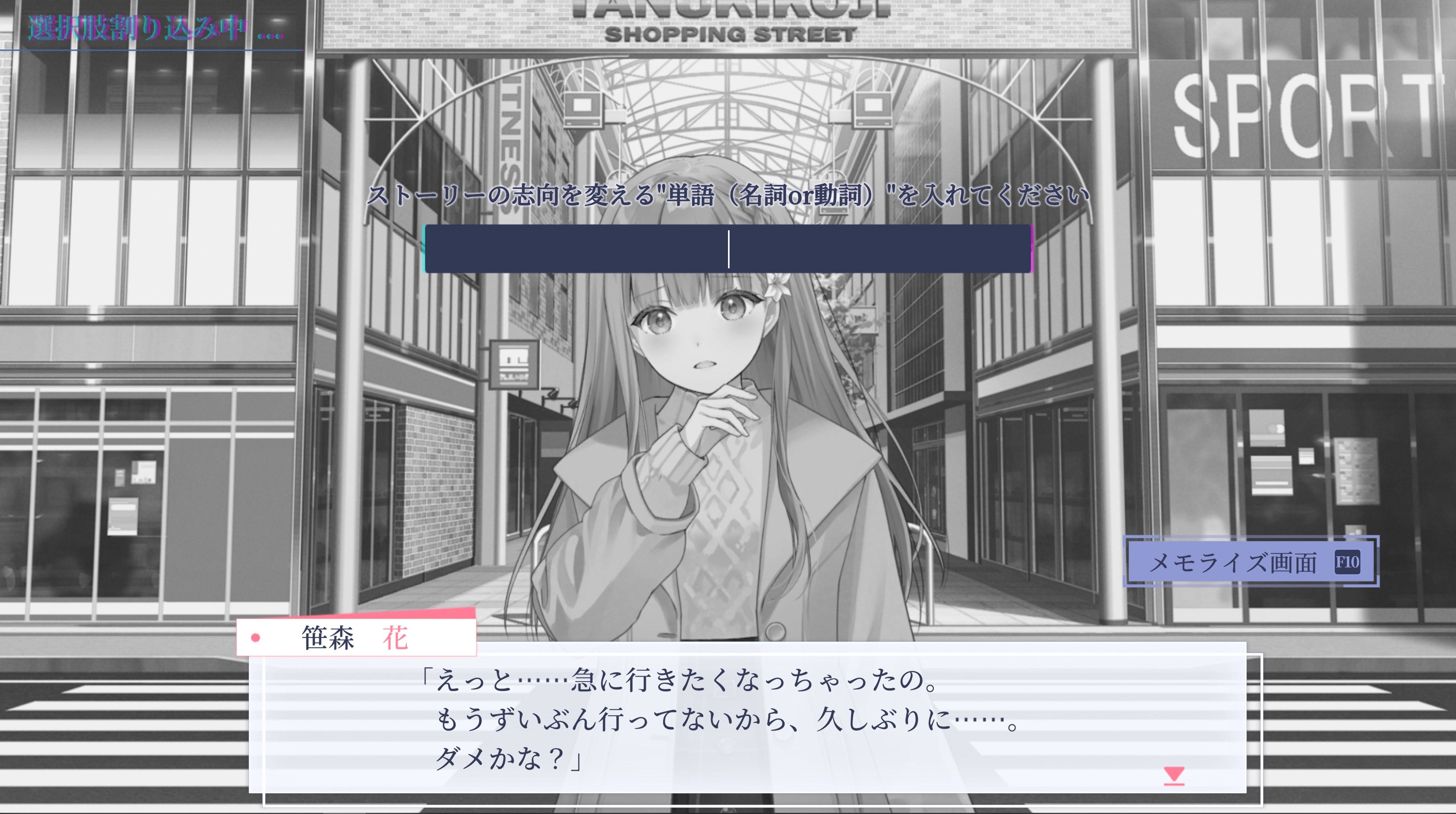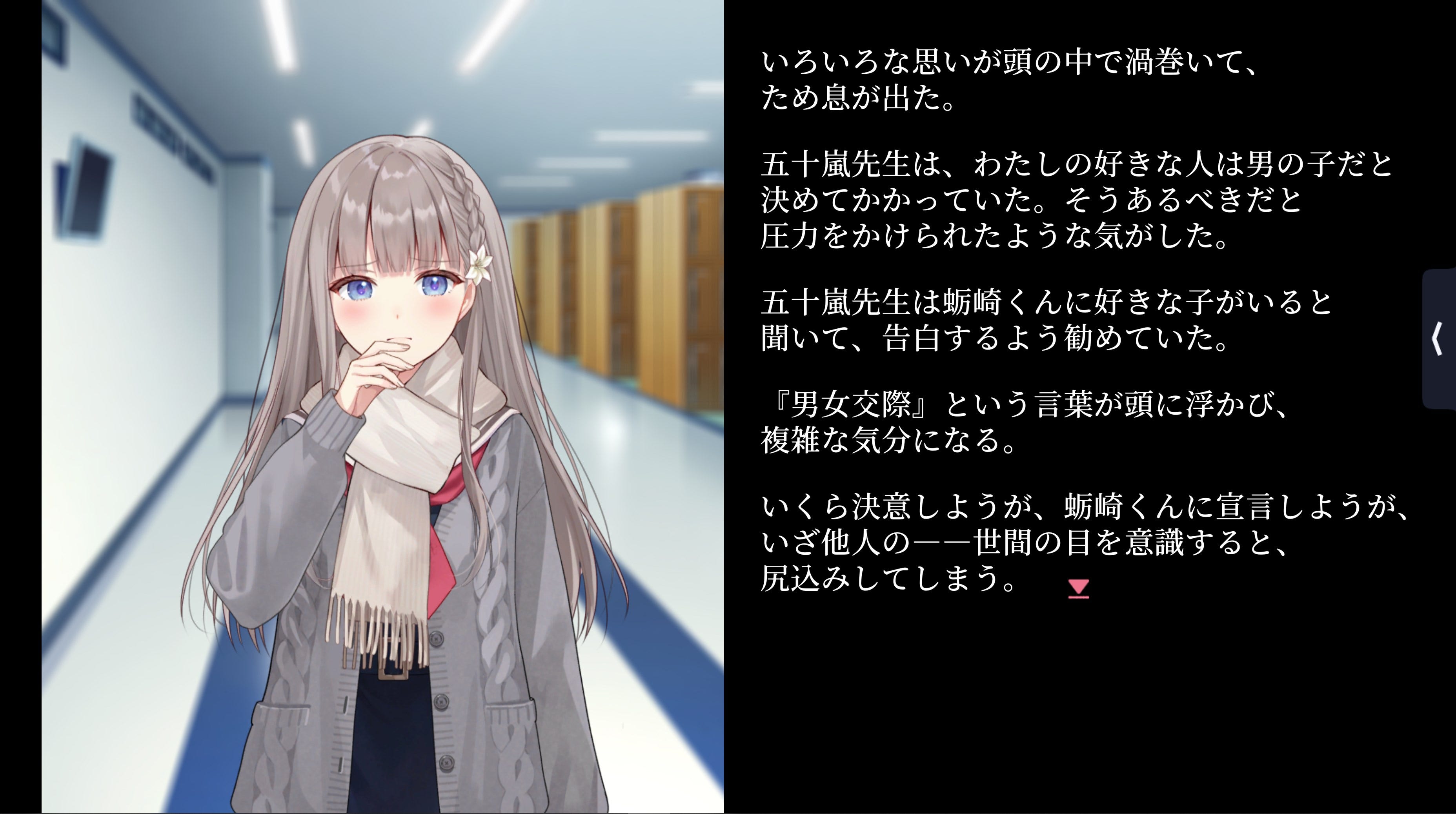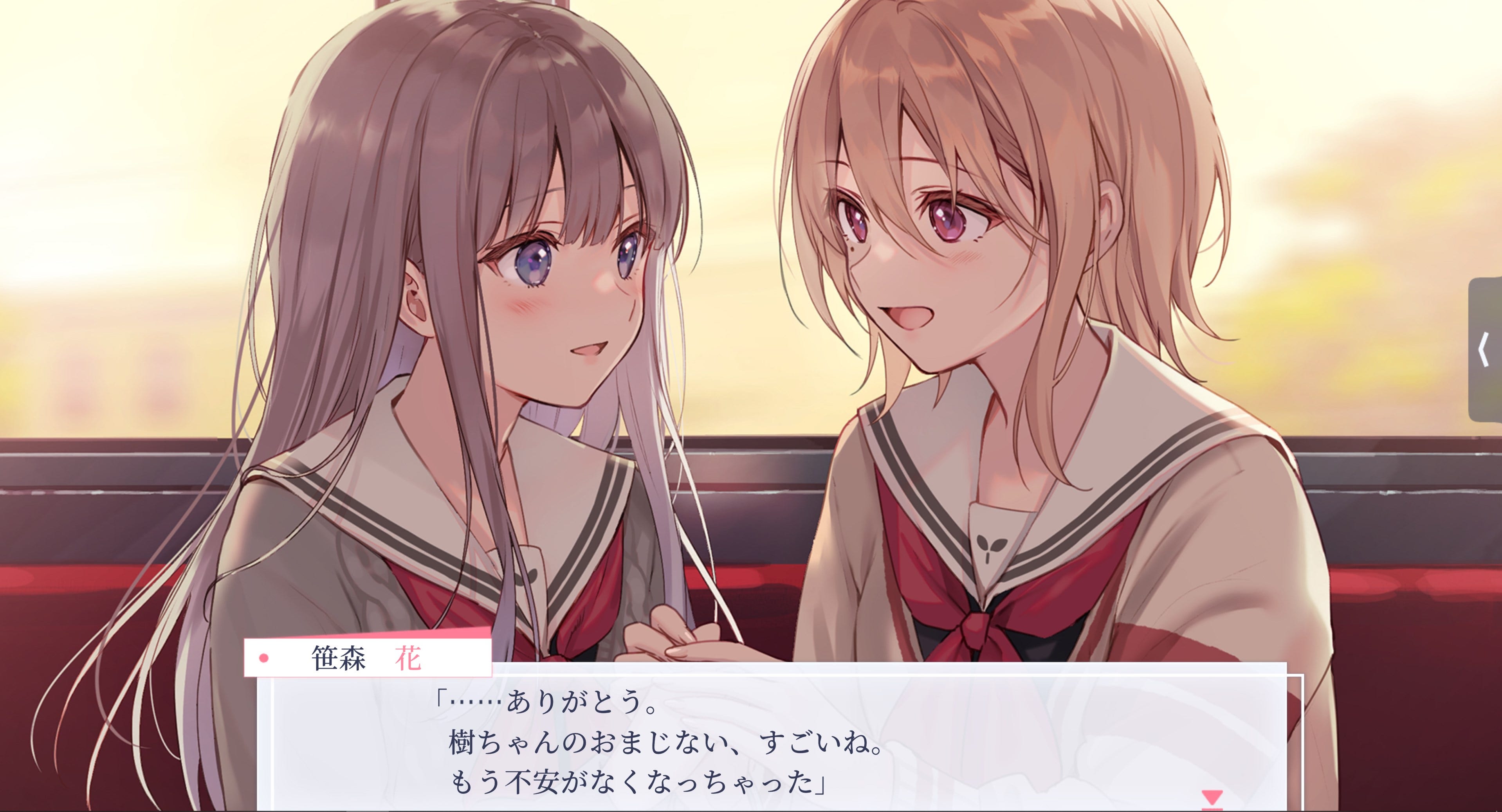早咲きのくろゆり (Hayasaki No Kuroyuri) Is A Yuri Visual Novel About Teenagers Who Are Hurt By Heteronormativity But Determined To Fight It
24 5月 2024

This article discusses homophobia, falling birth rates, reproduction, gay conversion therapy, and heteronormativity among other things. There are also some unmarked gameplay and plot spoilers for easier writing and reading.
The Forever War
Can the use of tax money for LGBT couples gain public support? They don't have children, therefore they are not productive.
I remember when I heard about the comments made by Mio Sugita of the Liberal Democratic Party. I was still studying in the United Kingdom and I thought I understood homophobia: it's simply hate speech toward certain classes of people for loving differently. The vitriol that Mio wrote and later aired on a right-wing TV show didn't match my naive understanding of homophobia.
It had to do with the real demographic problems facing Japan: if the country doesn't increase its replacement rate, there will be too many old people for the young to support. Eugenics was and still is alive and well. This is a "rational" reason for people to oppose homosexuality, and this "reasoning" was so frightening that I ended up reading books like The Political Economy of Japan's Low Fertility edited by Frances Rosenbluth to understand what was going on.
I knew instinctively that the low fertility rate had nothing to do with gay people. Academics have pointed out that the cost of parenthood has risen, and the Japanese state has done very little to support it outside of tax breaks. But I still couldn't shake the fact that queer people are unlikely to reproduce and will therefore be the scapegoats for falling birth rates. It makes "perfect" sense to tax them for not "contributing" to society.
A year later, I returned to Singapore and met an online mutual. As we leafed through the yuri section in Kinokuniya, he said, "You know, girls in fiction are super cute when they get together. But when I see women doing this stuff in real life, it disgusts me."
As he ranted about how gay people weren't doing their job, I wanted to vomit. I'm friends with a Sugita Mio. If they knew who I was, they would "rightly" view me as part of the problem that people weren't reproducing enough. I held it all in, nervous laughter and all. I think I stopped discussing yuri media afterwards until I started writing yuri visual novels because I was not just afraid of Sugita Mios out there but me being perceived as one. After all, aren't all yuri fans just in it for the fantasy and the fetishes? Social media said so: that's why we should grow up and engage with real lesbian media by real creators working in Hollywood right now.
This encounter happened six years ago. I like to think I've learned to move on, but I know I haven't -- not until we live in a world where the fertility crisis is no longer the main narrative.
A Brave New World
For better or for worse, 早咲きのくろゆり (Hayasaki no Kuroyuri) brought back those memories for me. A 2023 yuri visual novel by 1000-REKA, it follows Sasamori Hana's idyllic days with her crush Oomiya Itsuki and at first reads like a typical school life work with a science fiction twist.
However, what should have been mundane reads like a work of horror to our eyes: Hana listens to the teacher lecture on how the purpose of all living things is to reproduce, former criminals are "reformed" and will never do harm again, and the school encourages students of the opposite sex to "hang out". Catchy beats and chill tunes play as Hana reluctantly fills out a school survey asking if she's had encounters with men. These extreme measures were prompted after Japan faced a population crisis from a fictional pandemic; while the country successfully overcame it, it remains reluctant to relax its family planning policies. There's no doubt that Hana lives a normal and comfortable life with her family and friends, but the Japanese state lurks in the background, watching her every move.
It's hard to criticize a teenager for believing the state will care for them, especially when she's focused on her studies and future. Hana is especially concerned about how to live with Itsuki. The two have known each other since middle school and they're going to university together. Hana doesn't realize that their bond is more than just being close friends; she treasures every moment she spends with Itsuki. If anything, Hana seems unaware of how much Itsuki loves her company. Even their friend, Nishiki Aoi, jokes about much they care for each other.
The three are getting ready to graduate and decided that as one last project together, they should commit to a bucket list. Simple stuff like going shopping or watching the shark b-movies Aoi loves together. One day, during one of their outings, Hana saw Itsuki get into a fatal car accident and wakes up a few hours before it happened.
Hana realizes she is in a time loop and she can save Itsuki.
A Mind Forever Voyaging
With the help of Shoubugawa Maya (Hana's aunt), she must find ways to avert disaster. Otherwise, she will spend days reliving how her love was brutally killed.
This is where the player comes in. The job of the player is to guide Hana to an appropriate conclusion; they can use a text input parser to "suggest" to Hana what to do next or stop doing. The player must look for lines in the narration that are openings for these suggestions: Hana might be wondering where to go and -- in typical text adventure fashion -- the player can type in a location.

Hayasaki no Kuroyuri has three difficulty settings: beginner, expert, and pro. These settings don't change the content of the game; rather, lower difficulties present more clues to the player and automatically record important lines. I personally recommend playing on Expert because the gameplay is not only interesting but also relevant to the narrative experience.
Anyway, the game allows you to jump between nodes in a flowchart timeline of events. Players can record interesting lines that may prove useful and explore locations with point-and-click adventure gameplay. These interactions make the usual visual novel narrative more than just text to be read; it is meant to be analyzed, reduced to its essence, and used to solve puzzles. Though it cannot be compared to the likes of Infocom and Sierra, Hayasaki no Kuroyuri is a unique attempt to combine the gameplay of modern interactive fiction/adventure games with the readability of visual novels. It doesn't return to graphic parser games (examples include the original Mystery House), but instead offers a novel compromise between two types of gameplay: we read a visual novel and type in text to see if we actually understand what the game is trying to say.
I quite like this because it's a good way for the game to check if you're following the plot well. Visual novels like Chaos;Child already test your understanding of the story by giving you the equivalent of pop quizzes, so I find this version to be a nice upgrade. As a player, I realized that I was actually affecting the world within the visual novel by doing things "correctly" and seeing the consequences that follow. The feedback encouraged me to explore further and that made me more and more concerned for Hana's well-being. I cared about her and wanted her to have a happy life with Itsuki; it felt good to be a part of that and to help Hana grow as a person.
A Clockwork Orange
But even though I'm advancing the game state, I still feel like I'm doing something I shouldn't be doing. I began to wonder about the whole adventure game framework. Why is there no way to make multiple saves? What is the purpose of this limited parser gameplay? These peculiar inconveniences stand out so much that they must have some purpose.
After finding a way to rescue Itsuki from death, I am left uncertain what my role is as a player. Kakizaki Natsu, a sweet boy under most other circumstances, decides to ask her out on a date and Itsuki can't say no for some good reasons. Hana realizes that even if they don't talk to each other, it's natural for boys and girls to be together and they seem to make a good couple. But it hurts her and she enters into a new loop, repeating a new cycle of trauma. What am I supposed to do as a player in this situation?
Well, I can tell her that she can give up on Itsuki, so she can move on with her life. If she cares for Itsuki, then let Natsu date her. It's the answer most readily available to the player.
And it sucks.
The fact that I can encourage her to do so through the text parser makes me uneasy. That's too much control over the life of a closeted teenage girl. Paradoxically, I wanted less player agency/freedom because I felt like I was becoming an authority figure. I wasn't sure how to interpret this engine and my position as a player: should I brainwash her to be less gay?
Actually, is this whole interactive fiction framework literally gay conversion therapy?
Oh. Oh.

Hana doesn't know she's in this video game, and she doesn't know the player exists. Her thoughts intermingle with the player's input without her consent. I was horrified to realize that the adventure game segment I'd been enjoying was a "fun" and interactive form of conversion therapy.
I was part of the surveillance state that is ruining Hana's life, and I don't think any possible salvation will come from me as a player. The visual novel is the problem.
It's the Only Neat Thing to Do
But Hana is not a malleable character: unless the player tells her to give up, she will automatically find her resolve and repeat the loop. It doesn't matter if most paths lead to a dead-end; she doesn't want to lose Itsuki and she will try to find a way out.
I think it's hard not to admire Hana. She doesn't seem to be the type of protagonist who is proactive and changes people's lives; in more conventional yuri media, she would often be portrayed as the passive and prestigious one of the couple. But the time loops test her affection for Itsuki enough to change her and make her look for ways out.
After all, if she wasn't actively searching, she wouldn't be able to create openings for the player to suggest new paths. Many of the correct inputs that advance the game state are simply reminders to Hana; everything else such as her words, gestures, and actions, is up to her. The player can only guide her in the end.
And I think that's very effective: since the game won't let the player relinquish control, the next best thing is to let the player assist. None of the player's solutions solve everything. In fact, the final command in the third chapter complicates the relationship dynamics because of what Hana says. But it's true and authentic to her character: the player is simply highlighting things she's not aware of, and it feels wonderful for her to spin the input in her own way and change the circumstances of her own free will.
In a way, I don't think I saved her like some kind of master strategist. Instead, she saved me by never giving up her love. I felt like I had a connection with Hana because of this.
Times Square Red, Times Square Blue
That said, Hana is actually not my favorite character. She is an incredible protagonist, and the game's mechanics clearly harmonize with her personality, but I was drawn into the game when I realized there was something going on between Natsu and Sakurai Shuu.
These two guys are very close and Natsu is clearly in love with Shuu from the moment they are introduced. Natsu always blushes when Shuu says something weird but cool. I honestly like this couple more than the main couple because their dialog has some very cute banter and Shuu is just very charismatic.
So whenever I see Natsu convince himself that he should date Itsuki, it saddens me. It makes me think of many people (older or younger) who could've lived happier lives if they got to live with the people they love. Many people in heterosexual relationships might as well be victims too.
And I think that creates a richer and more critical understanding of heteronormativity. Hayasaki no Kuroyuri links the erasure of gay identities and the spread of compulsory heterosexuality to the lives of people growing up. Every LGBTQ+ law affects the lives of children, even if they are cis heterosexuals. To enforce heterosexuality, teachers and other authority figures must police "less desirable" forms of sexuality in young people. None of the teenagers in the game seem aware that gay people actually exist; they feel alone, confused about their own sexual identities because they are disconnected from the histories of people like them. Heteronormativity isn't just about how we should love the opposite sex, it's also about how we should police children to be "upstanding citizens".
Indeed, this conclusion suggests that most people -- even the antagonists -- are victims. The power elite and the structures that enforce heteronormativity are not present in the game, and they can't be overthrown anyway. The "villains" we do see are ordinary people who have been twisted by the ruling ideologies as their patriotic duty to keep Japan's population level afloat. They may be responsible for the harm, but they are not "evil"; they have been forced to sacrifice the lives of children for some mysterious Japanese eugenicist cause led by the truly evil people in power.
And the player is part of that equation too. The false choices and forced loops embed the player; they have no choice but to play the game and hope that Hana is brave enough to think radically. As a reluctant participant, the player can choose to enact the banality of evil or help a teenager exit this "loop".
Hayasaki no Kuroyuri thus makes heteronormativity as a structure visible to the naked eye: it is the visual novel framing we are playing, the biology classes teenagers are receiving, the alarmist speeches made by politicians, the reports on the fertility rate crisis, the aggressive family planning policies, and so much more.
Bloom into You
I wish I had played this game when I was younger, when I was deeply troubled by the intersection of my own gender identity and the politics of reproduction in the global north. I knew rationally that I needed to reject the claim that queer people were "unproductive," but I didn't know how.
I've read a lot of queer theory since then, and I still have a hard time pretending that I shouldn't "contribute," whatever that means. It's not that I have any national pride. I was just raised to be a heteronormative person.
This game -- and writing this article, I suppose -- allowed me to interrogate my own thoughts on the subject. I often took long breaks from the visual novel in order to reflect and think about what I value in sexuality and relationships and I knew I'll be writing a lot about this game. Hell, there's still more I want to talk about, but I think this article is not the space for them. I'm just getting tired writing this.
But I think this game has done a good job of dispelling most of the discomfort I have about being queer in a world that's in crisis. In the end, the narrative that we should put everything aside to reproduce is an authoritarian argument, especially when we are manipulating children's lives to correct our historical mistakes. Productivity is the wrong lens through which to talk about our future; we should be looking at something else like how we make the world safer for newer generations to express themselves in the way they want.
I would like to read more yuri and BL that is as politically and socially aware as Hayasaki no Kuroyuri. There's obviously room for fantasy, melodrama, and grounded stories in LGBTQ+ literature, and I welcome them -- but I want something as direct as this game that comments on the issues we face today.

There's value in reaching out and thinking through difficult issues together. It may not do much and it may even complicate things, but it's reassuring to know that we're not alone in thinking about them.
And well, if yuri media taught me anything, girls opening up to each other always make for great cute moments. I should do that more often.
Hayasaki no Kuroyuri is available on Steam. No English translation has been announced, but one can hope.